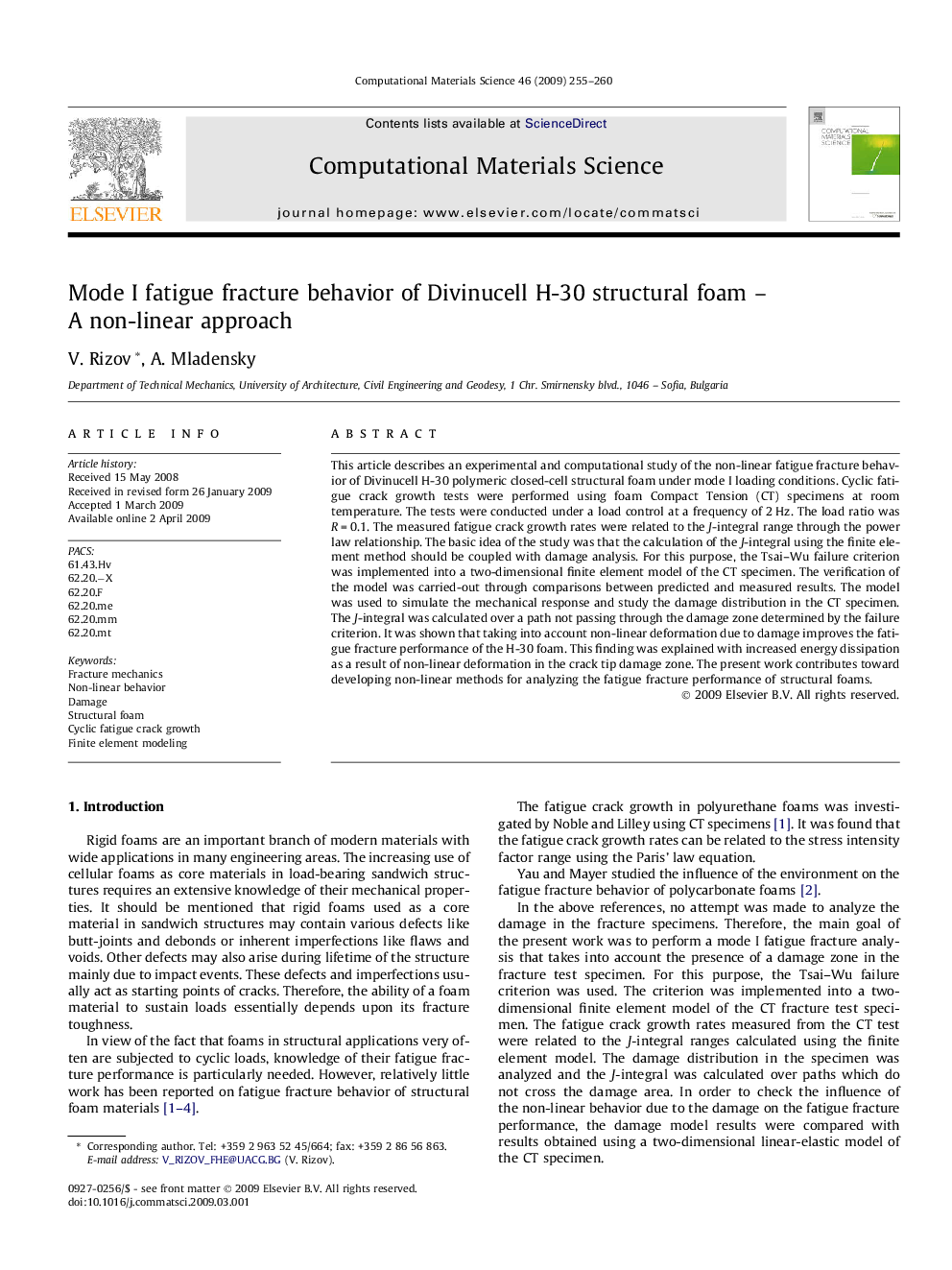| Article ID | Journal | Published Year | Pages | File Type |
|---|---|---|---|---|
| 1563526 | Computational Materials Science | 2009 | 6 Pages |
This article describes an experimental and computational study of the non-linear fatigue fracture behavior of Divinucell H-30 polymeric closed-cell structural foam under mode I loading conditions. Cyclic fatigue crack growth tests were performed using foam Compact Tension (CT) specimens at room temperature. The tests were conducted under a load control at a frequency of 2 Hz. The load ratio was R = 0.1. The measured fatigue crack growth rates were related to the J-integral range through the power law relationship. The basic idea of the study was that the calculation of the J-integral using the finite element method should be coupled with damage analysis. For this purpose, the Tsai–Wu failure criterion was implemented into a two-dimensional finite element model of the CT specimen. The verification of the model was carried-out through comparisons between predicted and measured results. The model was used to simulate the mechanical response and study the damage distribution in the CT specimen. The J-integral was calculated over a path not passing through the damage zone determined by the failure criterion. It was shown that taking into account non-linear deformation due to damage improves the fatigue fracture performance of the H-30 foam. This finding was explained with increased energy dissipation as a result of non-linear deformation in the crack tip damage zone. The present work contributes toward developing non-linear methods for analyzing the fatigue fracture performance of structural foams.
